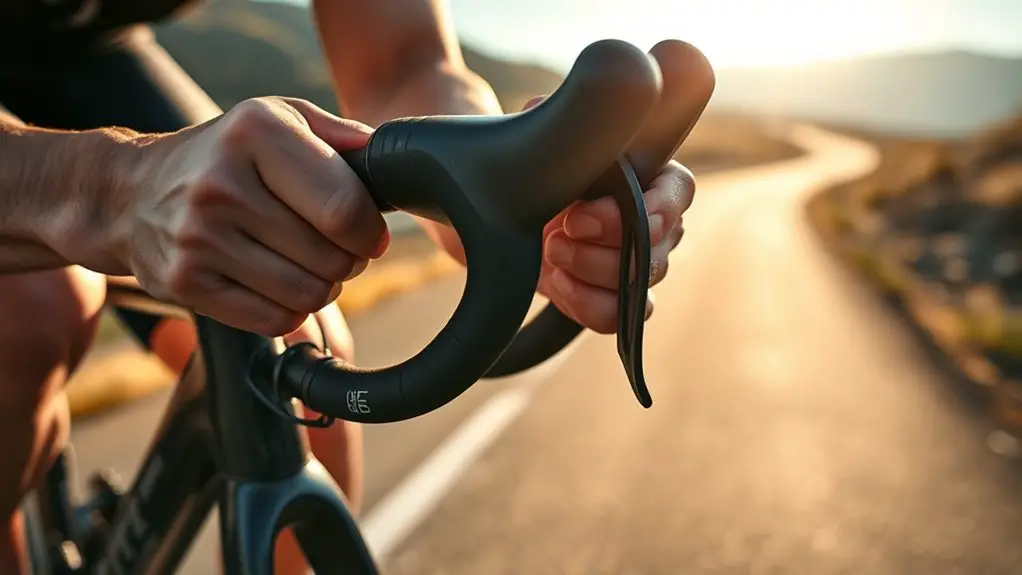To train for more efficient gear shifting, start by familiarizing yourself with your vehicle's transmission. Develop clutch control by practicing smooth engagement and releasing it gradually. Pay attention to the ideal RPM for shifts and time your changes based on engine sounds and vehicle feedback. Practice maintaining a consistent shifting rhythm and learn to shift in various driving conditions. Understanding these aspects can enhance your driving experience. Keep exploring to uncover more techniques that refine your skills.
Understanding Your Vehicle's Transmission
When you're looking to improve your gear-shifting skills, it's essential to understand your vehicle's transmission. Different transmission types, like manual and automatic, affect how you interact with your car. A manual transmission gives you control, allowing you to choose the right gear ratio for various driving conditions, while an automatic transmission does the heavy lifting for you.
Knowing how gear ratios work can set you free on the road. Lower gear ratios provide more torque for acceleration, while higher ratios are great for fuel efficiency at cruising speeds. By mastering these concepts, you'll feel the thrill of smooth shifts and responsive driving.
The Importance of Timing in Gear Shifting
While mastering gear shifting techniques is essential, the timing of your shifts can considerably impact your vehicle's performance. Proper shift timing guarantees smooth gear synchronization, giving you that exhilarating feeling of control and freedom on the road. Here are four key aspects to take into account:
- Engine RPM: Shift when the engine reaches its ideal RPM for power and efficiency.
- Throttle Position: Monitor your throttle input; smooth shifts lead to better synchronization.
- Load Conditions: Factor in your vehicle's load; heavier loads require earlier shifts for balance.
- Road Conditions: Adapt your timing based on weather and terrain; flexibility enhances performance.
Mastering the Clutch Control Technique
Mastering the clutch control technique can greatly enhance your driving experience, as it allows for smoother changes between gears. To achieve this, focus on the timing of your clutch engagement. Press the clutch pedal down fully before shifting, and then release it gradually as you engage the gear. This helps in achieving better gear synchronization, minimizing jerks and ensuring a more fluid ride.
Practice finding the sweet spot where the clutch engages, and you'll feel the car respond effortlessly. Remember, it's all about being in tune with your vehicle; the more you practice, the more instinctive it becomes.
Embrace the freedom of driving by feeling connected to your car, allowing you to shift with confidence and grace. With patience and persistence, you'll master this technique and transform your driving into a truly liberating experience. Enjoy the journey ahead!
Practicing Smooth Acceleration and Deceleration
To achieve smooth acceleration and deceleration, you need to master throttle control and timing your gear changes. It's all about finding that sweet spot where your engine responds seamlessly as you shift. By practicing these techniques, you'll enhance your overall driving experience and make gear shifting feel effortless.
Understanding Throttle Control
Throttle control is essential for achieving smooth acceleration and deceleration, as it allows you to modulate your vehicle's speed with precision. Mastering throttle modulation brings a sense of freedom on the road. Here are four tips to practice:
- Gradual Pressure: Apply throttle gently to create smooth shifts when accelerating.
- Anticipate Stops: Ease off the throttle early when approaching a stop to decelerate smoothly.
- Practice Blipping: When downshifting, practice quick bursts of throttle to match revs and maintain stability.
- Feel the Feedback: Pay attention to how your vehicle responds to your throttle inputs, adjusting as needed for a seamless ride.
With these techniques, you'll enjoy a more connected driving experience and the thrill of the open road.
Timing Your Gear Changes
While smooth acceleration and deceleration are essential for a comfortable driving experience, timing your gear changes plays a significant role in achieving that fluidity. To master this, you'll want to focus on gear synchronization techniques that help you connect your engine speed with vehicle speed. Finding those ideal shift points is vital; they'll allow you to shift seamlessly without losing momentum. Practice shifting just as you reach the peak of your power band, and you'll notice a smoother ride. Don't rush it—anticipate your next move and be in tune with your engine's rhythm. By honing your timing, you'll experience the freedom of effortless driving, making every journey a thrill rather than a chore.
Recognizing the Right RPM for Shifting
How can you tell when it's time to shift gears? Recognizing the right RPM for shifting is essential for a smooth ride and ideal performance. Here are a few rpm indicators to help you find that sweet spot:Recognizing the right RPM for shifting gears is key to a smooth ride and optimal performance.
- Engine Sound: Listen for the engine's tone; a higher pitch usually means you're nearing the shift point.
- Tachometer Reading: Keep an eye on your tachometer. Most engines perform best when shifting between 2,500 to 3,500 RPM.
- Acceleration Feel: If you start to feel a loss in power or acceleration, it's time to shift up.
- Road Conditions: Adjust based on terrain. Steeper hills might require shifting sooner to maintain momentum.
Embracing these cues not only enhances your driving experience but gives you the freedom to explore the open road confidently. Happy shifting!
Developing a Consistent Shifting Rhythm
When it comes to gear shifting, timing is everything. You'll want to practice your shift patterns consistently and pay attention to the sounds your engine makes. Developing a reliable shifting rhythm will make your driving smoother and more efficient.
Importance of Timing
Timing plays an essential role in mastering gear shifting, as a consistent rhythm can greatly enhance your overall riding experience. When you develop effective timing strategies, you'll find that shift synchronization becomes second nature. Here are a few tips to help you achieve that seamless shift:
- Listen to the Engine: The sound can guide you to the perfect moment to shift.
- Feel the Bike: Pay attention to how your bike responds; it'll tell you when it's time for a change.
- Practice Regularly: The more you ride, the more your timing will improve.
- Stay Relaxed: Tension can throw off your rhythm; keep it loose for smooth shifts.
Embrace these strategies, and you'll enjoy the freedom of effortless gear changes on every ride!
Practicing Shift Patterns
While mastering the art of gear shifting, practicing shift patterns is essential for developing a consistent rhythm. By focusing on your shift pattern analysis, you'll refine your technique and enhance your freedom on the road. Try implementing different gear selection strategies during your practice sessions to see what feels most natural.
| Gear | RPM Range | Shift Type |
|---|---|---|
| First to Second | 2,500 – 3,000 | Smooth Change |
| Second to Third | 3,000 – 3,500 | Quick Shift |
| Third to Fourth | 3,500 – 4,000 | Controlled Shift |
Consistent practice with these patterns will free you from hesitation, allowing you to shift seamlessly and enjoy your ride. So, get out there and embrace the thrill!
Listening to Engine Sounds
Mastering shift patterns lays the groundwork for understanding your vehicle, but honing in on engine sounds can elevate your shifting technique even further. Listening to engine pitch and recognizing sound cues will help you find that perfect rhythm. Here are four tips to enhance your shifting experience:
- Identify the sweet spot: Learn the engine's ideal RPM range for smooth shifts.
- Feel the vibrations: Pay attention to how the engine reacts to your acceleration.
- Listen for changes: Notice when the engine pitch rises or falls as a cue to shift gears.
- Practice in different conditions: Test your skills on various terrains to refine your sound recognition.
With practice, you'll shift seamlessly, making every drive feel like pure freedom.
Utilizing Engine Braking for Enhanced Control
Engine braking can greatly enhance your control over the vehicle, especially during downshifts or when maneuvering through curves. By using engine braking, you can slow down more smoothly, reducing wear on your brakes and maintaining a sense of freedom in your drive. This technique allows you to stay in tune with your surroundings, giving you the confidence to tackle those challenging turns without losing speed.
To maximize engine braking benefits, practice effective gear control techniques. Downshift appropriately as you approach a turn, allowing the engine's resistance to support your deceleration. Feel the power of the engine working in sync with your inputs, creating a seamless shift between acceleration and braking. As you gain experience, you'll notice how this method not only enhances your driving control but also connects you more closely to the road. Embrace engine braking for a more exhilarating and controlled driving experience!
Learning to Shift in Different Driving Conditions
As you navigate various driving conditions, understanding how to shift effectively becomes essential for maintaining control and optimizing performance. Different driving environments demand unique shifting techniques that can enhance your driving experience and give you the freedom to conquer any road. Here are four key aspects to regard:
- Urban Driving: Shift smoothly in stop-and-go traffic; focus on quick gear changes to maintain momentum.
- Highway Cruising: Use higher gears for efficiency, but be prepared to downshift for acceleration when needed.
- Off-Road Conditions: Engage lower gears to maximize torque and control; be mindful of traction.
- Wet or Slippery Roads: Shift gently to avoid losing grip; contemplate using a higher gear to reduce wheel spin.
Regular Maintenance for Optimal Performance
To guarantee your vehicle performs at its best, regular maintenance is essential. You want the freedom to hit the road without worrying about breakdowns or poor shifting. Start by scheduling regular inspections; these checks can catch issues before they escalate. Pay special attention to your transmission system, as it directly impacts gear shifting efficiency.
Don't forget about fluid replacement, too. Fresh transmission fluid guarantees smooth operation and protects against wear. Check your owner's manual for the recommended intervals and stick to them.
Maintaining your vehicle doesn't have to be a chore; think of it as an investment in your freedom. A well-maintained ride gives you the confidence to tackle any adventure. Embrace this responsibility, and you'll enjoy peak performance and enhanced peace of mind every time you hit the road. So, keep your vehicle in top shape, and let your journeys unfold without a hitch.
Frequently Asked Questions
How Can I Improve My Shifting Skills in Automatic Vehicles?
To improve your shifting skills in automatic vehicles, focus on mastering the shifting techniques that enhance your driving experience. While you may not manually shift gears, understanding how your automatic transmission works can help you make smoother changes. Pay attention to throttle control, and practice anticipating gear alterations, which can give you more freedom on the road. Embrace the thrill of driving by refining your skills and enjoying a seamless ride.
What Are Common Mistakes Drivers Make When Shifting Gears?
When you're behind the wheel, shifting gears shouldn't feel like launching a rocket! Many drivers make common mistakes like gear grinding and timing issues. You might rush the shift or forget to fully engage the clutch, which can lead to a bumpy ride. Embrace the freedom of the open road by practicing smooth, controlled shifts. Remember, it's all about harmony between your vehicle and you—so take your time and enjoy the journey!
How Can I Tell if My Transmission Needs Maintenance?
If you're wondering whether your transmission needs maintenance, keep an eye out for transmission symptoms. If you notice slipping gears, strange noises, or fluid leaks, it's a sign something's off. Also, check your fluid levels regularly; low fluid can lead to serious issues. Don't ignore these signs—addressing them early can save you from costly repairs and keep you cruising freely on the road. Stay proactive, and enjoy your drive!
Does Aggressive Driving Affect Gear Shifting Efficiency?
Imagine your car's gears dancing like a well-rehearsed ballet. When you engage in aggressive acceleration, your driving habits can upset that rhythm, leading to rough shifts and potential wear. It's like rushing through a song—everything feels off. If you're constantly slamming the pedal, it strains your transmission, reducing efficiency. So, ease up a bit; smoother driving not only feels liberating but also prolongs your vehicle's life and enhances that shifting performance you crave.
Can I Shift Gears Without Using the Clutch?
Yes, you can shift gears without using the clutch, known as clutchless shifting. It's all about timing and feel; if you're smooth with your changes, you can maintain control and keep the ride enjoyable. Practice it gradually, and you'll find that it offers a sense of freedom on the road. Just remember to listen to your engine and match your revs to avoid grinding gears. Embrace the thrill of the open road!




